In the ever-evolving world of kitchen appliances, the industrial waffle maker has emerged as a staple for commercial kitchens and homes alike. As the demand for quality, efficiency, and innovation grows, understanding the dynamics of the market becomes crucial for manufacturers and consumers. This article delves into the intricacies of the industrial waffle maker industry, focusing on key aspects such as market trends, consumer preferences, distribution channels, and the challenges and opportunities that lie ahead.
Introduction to Industrial Waffle Makers in the European and American Markets
Industrial waffle makers have long been a staple in the culinary landscape of both Europe and America, offering a delightful way to create the iconic Belgian waffle at scale. These appliances are not just for the casual baker; they are essential tools for restaurants, cafes, and even caterers looking to serve up the perfect waffle to their customers. In this section, we delve into the fascinating world of industrial waffle makers, exploring their presence in the European and American markets.
In Europe, waffle makers have a rich history, often associated with Belgium, where the dish originated. The continent has a diverse range of manufacturers, each with their unique take on the waffle-making process. From the bustling streets of Paris to the cozy cafes in Rome, industrial waffle makers are a common sight, providing a consistent and high-quality product that is beloved by locals and tourists alike.
Similarly, in the United States, the popularity of waffles has surged, thanks in part to the influx of international cuisine. Waffle houses have become iconic, serving up stacks of waffles with various toppings and syrups. Industrial waffle makers are a key component of these establishments, ensuring that the waffles are perfectly cooked and ready to be served quickly and efficiently.
The European market, known for its stringent quality standards, has seen industrial waffle makers evolve to meet the demands of professional kitchens. These machines often come with advanced features like adjustable temperature controls, non-stick surfaces, and even programmable settings for specific recipes. The emphasis is on reliability and consistency, as these waffle makers are expected to perform under the intense pressure of a busy kitchen environment.
In the American market, innovation has been a driving force behind the success of industrial waffle makers. American manufacturers have taken the traditional waffle and added their own twist, creating a wide array of flavors and textures. The market is not just limited to the classic Belgian waffle; there are now variations like the American-style waffle, which has a more open texture and is perfect for toppings.
One of the key factors that have contributed to the growth of the industrial waffle maker market in both Europe and America is the rise of health-conscious consumers. Waffles can be made with whole grains, nuts, and fruits, making them a healthier option compared to other breakfast items. This has led to an increase in demand for versatile waffle makers that can cater to a variety of dietary preferences.
When it comes to technology, European and American manufacturers have been at the forefront, integrating smart features into their industrial waffle makers. Touchscreen interfaces, automatic shut-off functions, and even Bluetooth connectivity for remote monitoring are becoming standard features. These advancements not only enhance the user experience but also contribute to the overall efficiency of the kitchen.
Another important aspect of the industrial waffle maker market is the distribution channel. In Europe, these machines are often found in specialized kitchen equipment stores, as well as online platforms that cater to professional chefs and restaurateurs. The American market, with its vast retail landscape, sees industrial waffle makers available not only in kitchen stores but also in large retail chains and online marketplaces.
Despite the growth, challenges remain for manufacturers. One significant challenge is the need for compliance with various safety and electrical standards. In both Europe and America, there are strict regulations regarding the use of appliances in commercial settings, and manufacturers must ensure that their products meet these requirements.
Additionally, the competition in the market is fierce. There are numerous brands vying for market share, each with their own strengths and weaknesses. Manufacturers must differentiate their products through innovation, quality, and customer service to stand out.
In conclusion, the industrial waffle maker market in Europe and America is a dynamic and evolving space. With a focus on quality, innovation, and consumer demand, these machines continue to play a crucial role in the culinary industry. As trends shift and technology advances, it will be intriguing to see how the market continues to grow and adapt to the needs of professional kitchens and consumers alike.
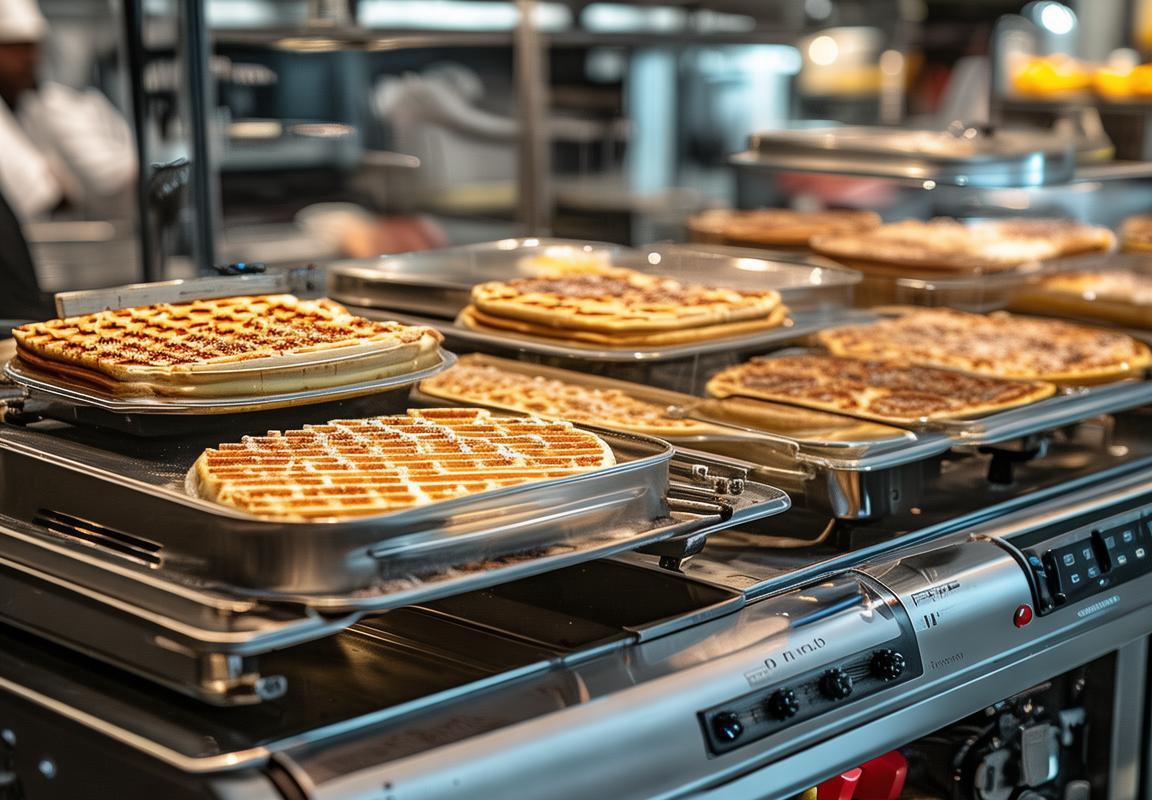
Market Overview: Growth Trends and Consumer Preferences
The European and American markets for industrial waffle makers have seen a surge in popularity, driven by a combination of evolving consumer preferences and the growing demand for convenience in the foodservice industry. This dynamic sector is not only witnessing a rise in sales but also experiencing a transformation in the types of products being offered.
Waffle makers have traditionally been a staple in households, but the commercial sector has seen a marked increase in demand. The market is segmented into various types, including manual, semi-automatic, and fully automatic models, each catering to different scales of operation from small cafes to large commercial kitchens.
In Europe, there’s a strong emphasis on quality and craftsmanship, which is reflected in the preference for high-end, durable waffle makers. These are often made with premium materials and designed to produce consistent, professional-grade waffles. The market is also influenced by health trends, with consumers increasingly looking for healthier options, such as whole grain and gluten-free waffles.
On the other side of the Atlantic, the American market is characterized by its diversity and innovation. There’s a significant segment of the market that caters to the fast-casual and quick-service restaurant (QSR) industry, where speed and efficiency are paramount. American consumers also have a penchant for unique flavors and designs, leading to a variety of creative waffle patterns and toppings.
One of the most notable growth trends in both regions is the rise of the gourmet and artisanal food movement. High-quality, artisanal waffle makers that allow for customization and personalization are gaining traction. These products often come with additional features like adjustable heat settings and non-stick surfaces, which are highly valued for their ease of use and clean-up.
The rise of social media has also played a significant role in shaping consumer preferences. Influencers and culinary enthusiasts are constantly showcasing new and exciting waffle recipes and ideas, which in turn inspire consumers to explore different waffle machines. This has led to an increase in demand for waffle makers that offer versatility, such as those capable of making different shapes and sizes of waffles.
Another key trend is the integration of technology. Smart waffle makers that can be controlled via smartphones or tablets are becoming increasingly popular, especially among tech-savvy consumers. These devices not only provide convenience but also allow for precise temperature control and programmable settings.
When it comes to consumer preferences, there are several factors that are consistently influential. First, ease of use is a major consideration, as busy professionals and families look for products that can be easily incorporated into their daily routines. Secondly, the aesthetic appeal of the waffle maker is important, with many consumers opting for sleek designs that complement their kitchen decor.
Energy efficiency is another crucial factor, particularly in Europe where there is a growing awareness of environmental sustainability. Consumers are increasingly seeking energy-saving appliances that reduce their carbon footprint without compromising on performance.
In terms of materials, stainless steel remains a top choice for its durability and hygiene properties. However, there’s also a growing interest in eco-friendly materials, such as bamboo and recycled plastics, which are being used in the construction of some newer models.
The market for industrial waffle makers in both Europe and America is also being influenced by the global pandemic. The increased focus on home cooking and baking has led to a surge in demand for commercial-grade appliances that can produce high-quality waffles at home. This shift has prompted manufacturers to expand their product lines and cater to this new wave of domestic chefs.
Overall, the market for industrial waffle makers is robust and evolving, with a focus on innovation, sustainability, and consumer convenience. As the demand for quality and unique waffle experiences continues to grow, manufacturers are responding with a variety of new products that cater to the diverse needs of both commercial operators and home users.
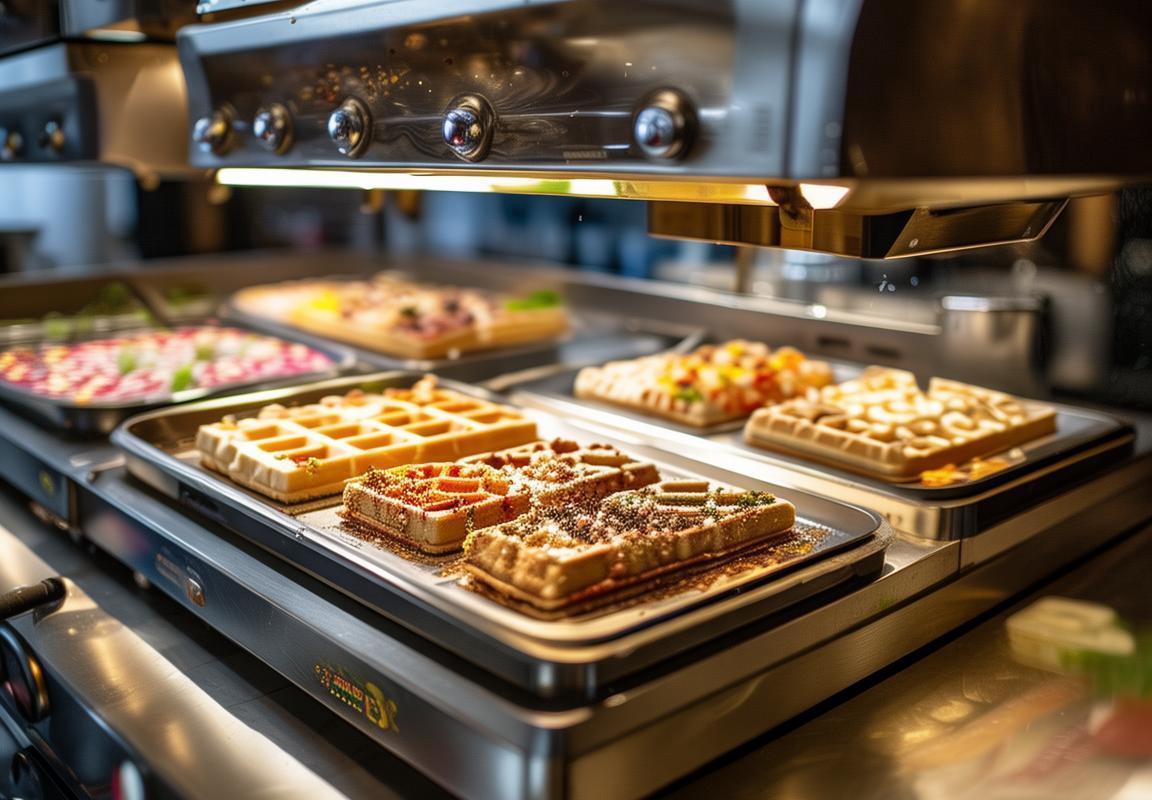
The 220V Standard: A Necessity for Cross-Border Sales
Understanding the importance of the 220V standard is pivotal for manufacturers and retailers looking to expand their industrial waffle maker market share across Europe and America. Here’s an in-depth look at why this voltage is a necessity for cross-border sales:
The 220V standard is a direct result of the differing electrical systems prevalent in European and American markets. While the majority of countries in Europe operate on a 220-240V power grid, the United States and a few other countries use a 110-120V system. This distinction creates a significant challenge for companies aiming to sell their products globally.
Compatibility issues arise when attempting to market waffle makers designed for the 220V standard in markets like the US. These appliances, if not appropriately adapted, could pose a serious risk of damage to both the appliance and the user due to the mismatch in voltage. For instance, a waffle maker designed for 220V may have a heating element that exceeds the capacity of a 110V socket, leading to overheating and potential safety hazards.
Moreover, the 220V standard is not only a safety concern but also a critical factor in ensuring optimal performance of industrial waffle makers. The higher voltage allows for faster cooking times, as it provides more power to the heating elements, which is essential in high-volume settings such as commercial kitchens and food service operations. For these establishments, the efficiency of their appliances directly impacts their bottom line, making the 220V standard a non-negotiable for cross-border sales.
To cater to the 220V market, manufacturers must invest in developing dual-voltage models or voltage conversion devices that can safely adjust the power input to match the local electrical standards. This not only requires engineering expertise but also involves thorough testing to guarantee safety and performance. The costs associated with these modifications can be substantial, but they are often justified by the potential revenue from a larger customer base.
In Europe, the presence of the 220V standard is deeply ingrained in the infrastructure, and consumers have come to expect appliances that are designed to operate at this voltage. This means that industrial waffle makers that are not 220V compliant may be at a disadvantage when it comes to attracting European customers, as they might perceive the product as less reliable or of lower quality.
Similarly, in the United States, manufacturers need to be mindful of the 110-120V standard. However, the situation is not as stringent as it is in Europe due to the presence of other voltage ranges in the market. Nonetheless, the 220V standard remains a significant benchmark for high-quality, professional-grade appliances, and manufacturers who want to position their products as premium offerings must consider this voltage for their US market strategies.
The 220V standard also plays a role in the branding and marketing of industrial waffle makers. For example, a product that is advertised as “220V compatible” may resonate more with European consumers, who are accustomed to this voltage. This can be a powerful selling point, especially when targeting businesses that cater to international clients, such as hotels, restaurants, and event venues.
Additionally, the 220V standard influences the logistics and supply chain of cross-border sales. Distributors and retailers must ensure that they have access to the correct voltage models or conversion solutions to meet customer demands. This requires careful inventory management and a clear understanding of the target market’s electrical infrastructure.
In conclusion, the 220V standard is not just a technical specification; it is a symbol of quality and reliability in the industrial waffle maker market. For companies aiming to expand their global footprint, adhering to this standard is a necessity that can make or break the success of their cross-border sales. It’s a testament to the importance of understanding and respecting the nuances of international markets and their unique electrical requirements.
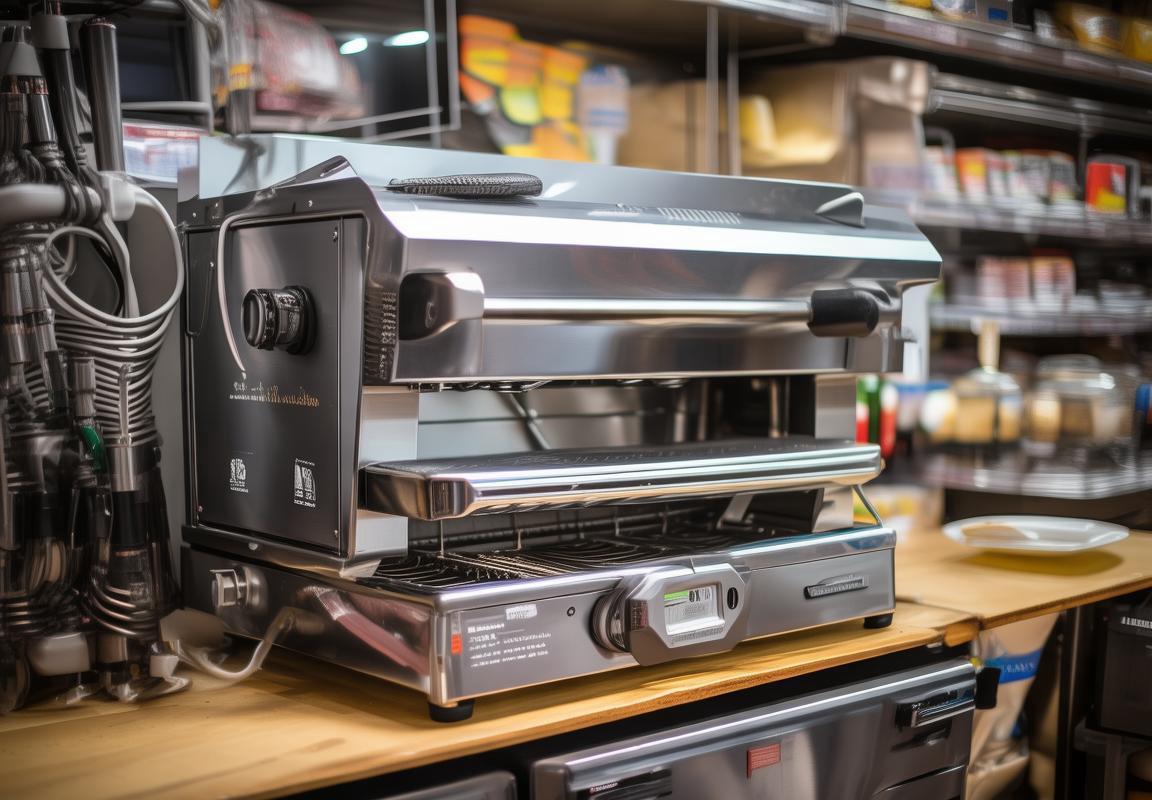
Key Players and Market Dynamics
In the bustling landscape of the industrial waffle maker market, several key players have emerged as dominant forces, each bringing their unique strengths and strategies to the table. From established appliance giants to niche manufacturers, the competition is fierce yet collaborative, driving innovation and market expansion.
Innovative Giants of the Industry
At the forefront of the market are well-known appliance brands that have diversified their product lines to include industrial waffle makers. Companies like Electrolux, KitchenAid, and Breville have leveraged their reputation for quality and reliability to capture a significant share of the market. These brands often invest heavily in research and development, leading to the introduction of high-tech, energy-efficient models that appeal to both commercial and consumer markets.
Emerging Niche Manufacturers
On the other side of the spectrum, niche manufacturers have carved out their own niches with specialized and innovative waffle makers. These companies focus on specific market segments, such as professional chefs, food service operators, or health-conscious consumers looking for gluten-free options. They often differentiate themselves through unique features, such as adjustable heat settings, non-stick surfaces, and eco-friendly materials.
Strategic Partnerships and Collaborations
The market dynamics of industrial waffle makers are also shaped by strategic partnerships and collaborations. For instance, some manufacturers have formed alliances with foodservice distributors to ensure their products are readily available to restaurants, cafes, and catering services. Others have partnered with culinary schools and chefs to develop new recipes and promote their products in the culinary community.
Global Expansion and Local Adaptation
As the market becomes more global, key players are increasingly focusing on international expansion. This requires not only adapting to different voltage standards, such as the 220V required in many European and American countries, but also understanding local cultural preferences and regulations. Companies like DeLonghi and Gaggenau have successfully navigated these challenges by offering a range of products that cater to diverse markets while maintaining their brand identity.
Competitive Pricing and Value Propositions
Pricing is a critical factor in the industrial waffle maker market. Key players must balance the need to offer competitive pricing with the desire to maintain high-quality standards. This often involves finding cost-effective manufacturing processes while still providing value-added features that justify the price point. Some manufacturers have adopted premium pricing strategies, positioning their products as luxury items for the most discerning consumers.
Marketing and Branding Strategies
Marketing and branding play a crucial role in the success of industrial waffle maker companies. Key players invest in advertising campaigns that highlight the benefits of their products, such as convenience, ease of use, and versatility. They also leverage social media and influencer partnerships to reach a wider audience and create buzz around their latest innovations.
Customer Service and Support
The ability to provide excellent customer service and support is another differentiator for key players in the market. This includes offering comprehensive warranties, easy-to-access troubleshooting guides, and responsive customer service teams. By ensuring that customers have a positive experience from purchase to use, companies can build loyalty and repeat business.
Regulatory Compliance and Safety
Compliance with international safety standards is non-negotiable in the industrial waffle maker market. Key players must adhere to strict regulations regarding electrical safety, material quality, and fire resistance. This not only protects consumers but also maintains the reputation of the brand.
Sustainability and Eco-Friendly Practices
In recent years, sustainability has become a major concern for consumers and businesses alike. Key players are responding by incorporating eco-friendly practices into their manufacturing processes and product design. This includes using recycled materials, reducing energy consumption, and promoting products that are easy to recycle at the end of their lifecycle.
The industrial waffle maker market is dynamic, with key players navigating a complex landscape of competition, innovation, and consumer demands. By staying agile and focused on customer needs, these companies are well-positioned to continue leading the industry into the future.

Innovations in Design and Functionality
In recent years, the industrial waffle maker market has witnessed a surge in innovation, transforming the way these appliances are designed and function. From sleeker aesthetics to advanced features, here’s a closer look at the latest trends in design and functionality.
The shift towards compact and portable designs has been significant. Industrial waffle makers are no longer just large, bulky machines found in commercial kitchens. Modern models are now designed to be more compact, making them easier to store and transport. This is particularly beneficial for caterers and mobile food vendors who require flexibility in their equipment.
One key innovation is the integration of touch controls, replacing traditional dials and buttons. These intuitive interfaces provide a seamless user experience, allowing operators to adjust settings with a simple touch. The inclusion of digital displays has also become standard, offering precise temperature control and countdown timers for optimal waffle cooking.
Energy efficiency is another area where designers have focused their efforts. Newer models often come with eco-friendly features, such as automatic shut-off functions that conserve energy when not in use. This not only reduces operational costs but also aligns with the growing demand for sustainable products.
The ability to customize waffle patterns is a feature that has gained popularity. Many industrial waffle makers now offer interchangeable plates with different shapes and sizes, allowing for a variety of waffle designs. This caters to diverse consumer preferences and the need for variety in the food service industry.
Safety features have also seen advancements. Modern industrial waffle makers often include non-slip bases and cool-touch handles to prevent accidents. Additionally, some models are equipped with safety locks to prevent accidental operation, ensuring a secure cooking environment.
In terms of functionality, the introduction of non-stick coatings has been a game-changer. These coatings make it easier to release waffles from the plates, reducing the need for excessive scraping and prolonging the life of the appliance. Some high-end models even feature self-cleaning functions, simplifying maintenance and saving time for busy kitchens.
The integration of smart technology is becoming more prevalent. Some industrial waffle makers can now be connected to kitchen management systems, allowing for remote monitoring and control. This is particularly useful for large-scale operations where multiple waffle makers are used simultaneously.
Another innovation is the inclusion of programmable settings. Operators can pre-program their desired waffle settings, including temperature and cooking time, ensuring consistency across batches. This is especially valuable in commercial settings where speed and uniformity are crucial.
Designers have also focused on ease of maintenance. The removable plates and components make cleaning more efficient, and some models even come with dishwasher-safe parts. This not only saves time but also reduces the risk of cross-contamination in food preparation areas.
In the realm of materials, there has been a move towards using higher-quality, more durable components. Stainless steel and heavy-duty plastics are now standard in many industrial waffle makers, ensuring that these appliances can withstand the rigors of continuous use.
Lastly, the customization of waffle makers for specific applications has become a trend. For instance, some models are designed with specific features for gluten-free or vegan waffles, catering to the growing demand for specialized diets.
Overall, the evolution of industrial waffle makers in terms of design and functionality reflects the industry’s commitment to meeting the diverse needs of consumers and commercial kitchens alike. As technology continues to advance, we can expect even more innovative features that will further enhance the user experience and efficiency in the world of waffle making.
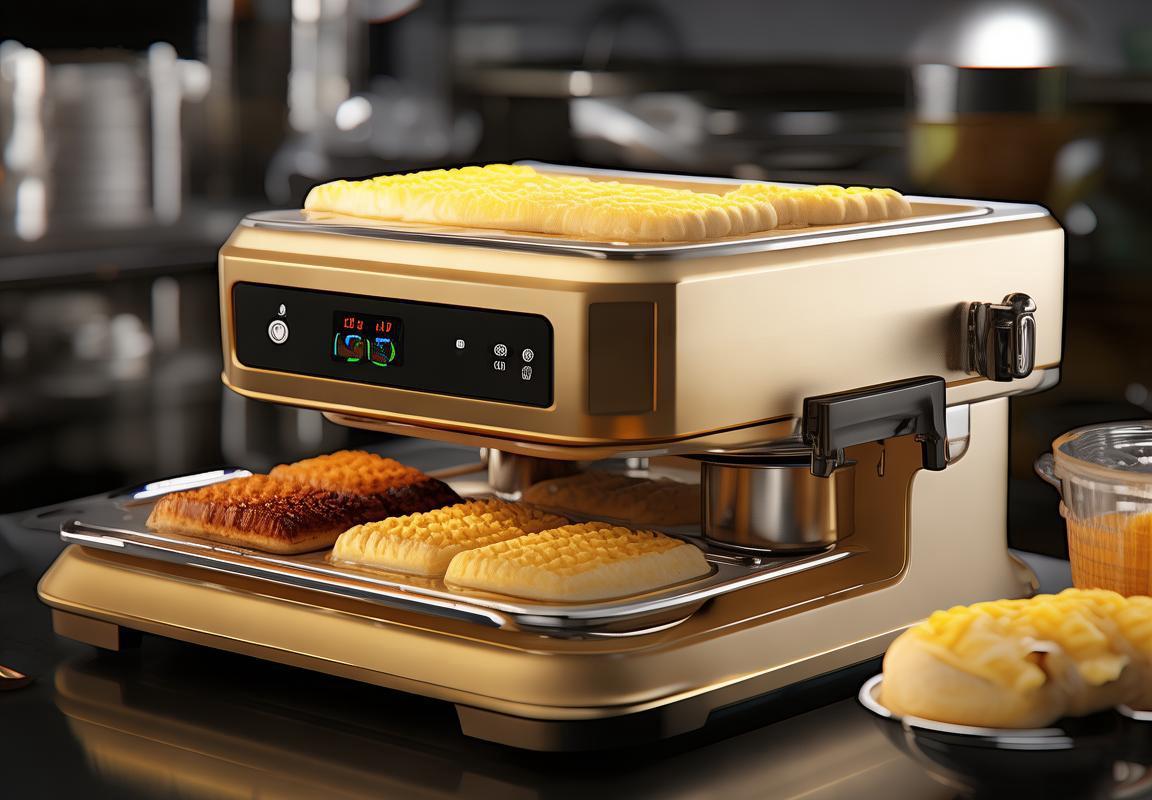
Regulatory Compliance and Safety Standards
In the realm of kitchen appliances, the importance of regulatory compliance and safety standards cannot be overstated. Ensuring that industrial waffle makers meet these criteria is crucial for both manufacturers and consumers. Here’s an exploration of the intricacies involved:
Manufacturers must navigate a complex web of regulations to bring their products to market. From electrical safety to material quality, every aspect of the production process is scrutinized. For instance, the International Electrotechnical Commission (IEC) provides a framework for electrical equipment standards, including voltage and frequency, which is vital for waffle makers designed for both domestic and commercial use.
One of the most critical aspects of compliance is the voltage standard. In many European countries, the standard voltage is 230V, while in the United States, it’s 120V. The 220V standard, which is commonly used in countries like Germany, France, and Italy, presents a unique challenge for manufacturers looking to expand their market reach. Adapting to this voltage requires careful engineering to ensure that the waffle makers operate safely and effectively across different regions.
Safety certifications are another cornerstone of compliance. Organizations such as Underwriters Laboratories (UL) in the United States and the European Committee for Electrotechnical Standardization (CENELEC) in Europe offer certifications that validate a product’s safety. These certifications often involve rigorous testing for electrical, thermal, and mechanical hazards.
Electrical safety is paramount, especially since waffle makers can reach high temperatures and operate at high voltages. The insulation materials must be flame-retardant, and the appliances must be designed to prevent electrical shocks and short circuits. Additionally, the presence of child-resistant features is often a requirement, given the potential for children to come into contact with hot surfaces.
Material safety is equally important. The plastics and metals used in the construction of waffle makers must not leach harmful substances into the food. In Europe, the REACH (Registration, Evaluation, Authorisation, and Restriction of Chemicals) regulation governs the use of chemicals, while in the U.S., the Food and Drug Administration (FDA) oversees the safety of materials that come into contact with food.
Energy efficiency is also a growing concern. In many markets, there is a push for appliances that consume less energy, which not only reduces operational costs but also has a positive environmental impact. The European Union’s Energy Labeling Directive and the U.S. Energy Star program provide guidelines for manufacturers to create more energy-efficient products.
Another aspect of regulatory compliance is noise levels. Appliances that are too loud can be a nuisance, especially in commercial settings. Therefore, waffle makers must be designed to operate at acceptable noise levels, ensuring they do not disrupt the dining experience or create discomfort.
For manufacturers, staying abreast of these regulations is a continuous challenge. They must invest in research and development to ensure their products meet the latest standards, often involving collaborations with testing laboratories and certification bodies.
Consumers, on the other hand, benefit from the peace of mind that comes with purchasing a waffle maker that has been thoroughly tested and certified. They can trust that the appliance is safe to use, free from harmful substances, and energy-efficient.
Moreover, regulatory compliance can also be a competitive advantage. Consumers are increasingly looking for brands that prioritize safety and sustainability. A product that meets or exceeds safety standards can differentiate a manufacturer in a crowded market.
In conclusion, the path to regulatory compliance and safety standards in the industrial waffle maker industry is fraught with complexities. However, for manufacturers willing to invest in quality and adhere to stringent regulations, the rewards are clear: a more secure product for consumers and a solid reputation for the brand.

Consumer Insights: What European and American Households Seek
In today’s fast-paced world, consumers in both Europe and America are increasingly seeking convenience and efficiency in their everyday lives, including when it comes to kitchen appliances. This shift has led to a demand for features that not only enhance the cooking experience but also cater to various lifestyle needs. Here’s a closer look at the insights shaping the preferences of European and American households when it comes to kitchen appliances.
Households in Europe are known for their appreciation of quality and design, which extends to kitchen appliances. Many European consumers prefer appliances that blend seamlessly with their kitchen decor, offering both aesthetics and functionality. Smart features like Wi-Fi connectivity and voice control have become increasingly popular, allowing for greater control and ease of use.
American consumers, on the other hand, tend to place a strong emphasis on convenience and speed. The hustle and bustle of daily life often leaves little time for elaborate cooking processes. As such, appliances that can help streamline meal preparation are highly sought after. Features like one-touch settings and programmable timers are seen as invaluable, making it easier for busy individuals to create delicious meals without spending hours in the kitchen.
Health-consciousness has also become a significant trend in both regions. Consumers are looking for appliances that not only make cooking more efficient but also support healthier eating habits. This includes appliances that can handle a variety of cooking methods, such as air fryers, slow cookers, and pressure cookers, which allow for healthier cooking options like low-fat and low-sodium meals.
In Europe, there’s a growing preference for appliances that support sustainable living. This extends beyond just energy-efficient models; it also encompasses products that are made from eco-friendly materials and have a minimal environmental footprint. European consumers are more likely to invest in appliances that have certifications from recognized environmental organizations.
American consumers, while also valuing sustainability, are often more focused on the practicality of the product. They seek appliances that offer durability and long-lasting performance, which is why appliances with robust warranties and a reputation for reliability are highly valued. Additionally, the “buy American” movement has gained traction, with consumers increasingly opting for appliances produced domestically.
In the realm of kitchen appliances, versatility is key. European and American households alike are looking for appliances that can handle a wide range of tasks, from baking and grilling to juicing and blending. This means multifunctional appliances like countertop ovens, multipurpose toasters, and versatile blenders are becoming more popular as they cater to a variety of cooking styles and preferences.
Another significant trend is the integration of technology into kitchen appliances. Smart appliances are not just about convenience; they also provide users with data that can help them make more informed decisions about their health and diet. For example, smart kitchen scales that track portion sizes and nutritional information are gaining traction, as are ovens that can be controlled remotely through a smartphone app.
European and American households also differ in their approach to kitchen space. European kitchens often have less space, so they prioritize compact appliances that save space without compromising on performance. In contrast, American kitchens tend to be larger, allowing for the installation of larger appliances that offer more capacity and functionality.
Finally, customer reviews and testimonials play a crucial role in shaping consumer preferences. Both European and American consumers are influenced by what others have to say about products they are considering purchasing. Online platforms and social media have made it easier for consumers to share their experiences and provide feedback, which can significantly impact the popularity of certain kitchen appliances.
In summary, the insights into what European and American households seek in kitchen appliances are diverse yet interconnected. They reflect a blend of aesthetics, functionality, health, sustainability, and technology, all of which are integral to enhancing the cooking experience and fitting into modern lifestyles. As the kitchen continues to evolve as a hub for innovation, these insights will undoubtedly shape the future of kitchen appliance design and development.
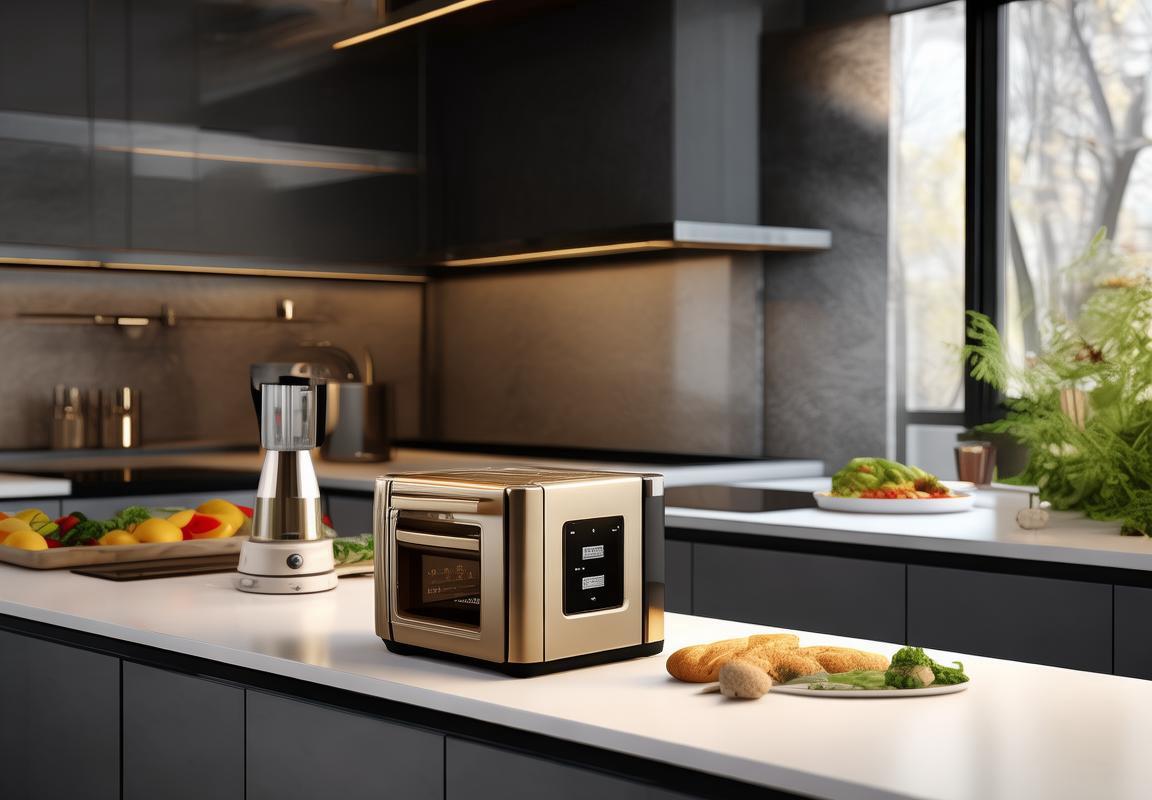
Distribution Channels and Retail Strategies
In the competitive landscape of kitchen appliances, distribution channels and retail strategies play a pivotal role in the success of industrial waffle makers. Understanding these avenues is crucial for manufacturers looking to tap into European and American markets. Let’s delve into the intricacies of how these channels shape the market and influence consumer purchasing decisions.
Retailers and E-commerce PlatformsRetailers serve as the gatekeepers of consumer access to industrial waffle makers. From large home improvement stores to specialty kitchenware shops, these outlets provide physical spaces where customers can interact with products. Online, e-commerce platforms like Amazon and eBay have become the new frontier for appliance sales. They offer convenience and a wide range of options, making it easier for consumers to compare prices and read reviews. The presence of a brand on these platforms can significantly impact its visibility and sales.
Direct-to-Consumer (DTC) ApproachSome manufacturers opt for a direct-to-consumer strategy, bypassing traditional retail channels. This approach allows for a more personalized customer experience and greater control over the sales process. DTC enables brands to gather valuable customer data, which can be used to refine marketing efforts and product development. However, it requires a robust online presence and efficient logistics to manage shipping and customer service.
Specialized Distributors and WholesalersSpecialized distributors and wholesalers are key players in the industrial waffle maker market. They purchase products in bulk from manufacturers and distribute them to a wide network of retailers and businesses. This model is particularly effective for reaching small and medium-sized enterprises (SMEs) that may not have the resources to deal directly with manufacturers. Distributors often provide additional services such as marketing support, inventory management, and after-sales service.
Local Partnerships and DealershipsIn the European and American markets, establishing local partnerships and dealerships can be a game-changer. These partnerships often come with an understanding of local market dynamics, customer preferences, and cultural nuances. Local dealerships can offer personalized service and support, which can be a significant advantage in customer retention and loyalty. Moreover, having a physical presence in various regions can help in building brand trust and recognition.
Trade Shows and ExhibitionsTrade shows and exhibitions are excellent venues for manufacturers to showcase their industrial waffle makers to a broad audience. These events attract industry professionals, retailers, and end-users, providing a platform for networking and sales. Manufacturers can use these opportunities to demonstrate the features and benefits of their products and gather direct feedback.,、。,。
Online Advertising and Social MediaThe digital age has revolutionized marketing strategies. Online advertising and social media are powerful tools for reaching a targeted audience. Manufacturers can leverage platforms like Facebook, Instagram, and YouTube to create engaging content that showcases the versatility and quality of their waffle makers. Influencer partnerships can also amplify brand visibility and credibility. Online advertising and social media are powerful tools for reaching a targeted audience. Manufacturers can leverage platforms like Facebook, Instagram, and YouTube to create engaging content that showcases the versatility and quality of their waffle makers. Influencer partnerships can also amplify brand visibility and credibility.
E-commerce IntegrationIntegrating e-commerce with retail strategies is essential. Many consumers start their research online and may prefer to make a purchase in-store or receive a product that they’ve seen advertised online. Manufacturers can create a seamless shopping experience by ensuring that their online and offline channels complement each other. This integration might include providing in-store kiosks with product information, allowing online purchases to be picked up in-store, or offering special promotions for online customers who visit a physical location.
Customer Loyalty ProgramsCustomer loyalty programs can be a significant driver of repeat business. By offering incentives such as discounts, free samples, or exclusive content, manufacturers can encourage customers to choose their brand over competitors. These programs can also provide valuable insights into customer preferences and behavior, which can inform future product development and marketing efforts.
Collaborative Marketing and Co-BrandingCollaborative marketing and co-branding can be a strategic way to expand market reach. By partnering with complementary brands or retailers, manufacturers can tap into new customer segments and leverage each other’s customer bases. This approach can also enhance brand perception and create a more dynamic product offering.
In conclusion, the distribution channels and retail strategies for industrial waffle makers are multifaceted and require a nuanced understanding of the market. By employing a mix of online and offline channels, leveraging partnerships, and focusing on customer experience, manufacturers can build a robust sales network that supports their growth in the European and American markets.
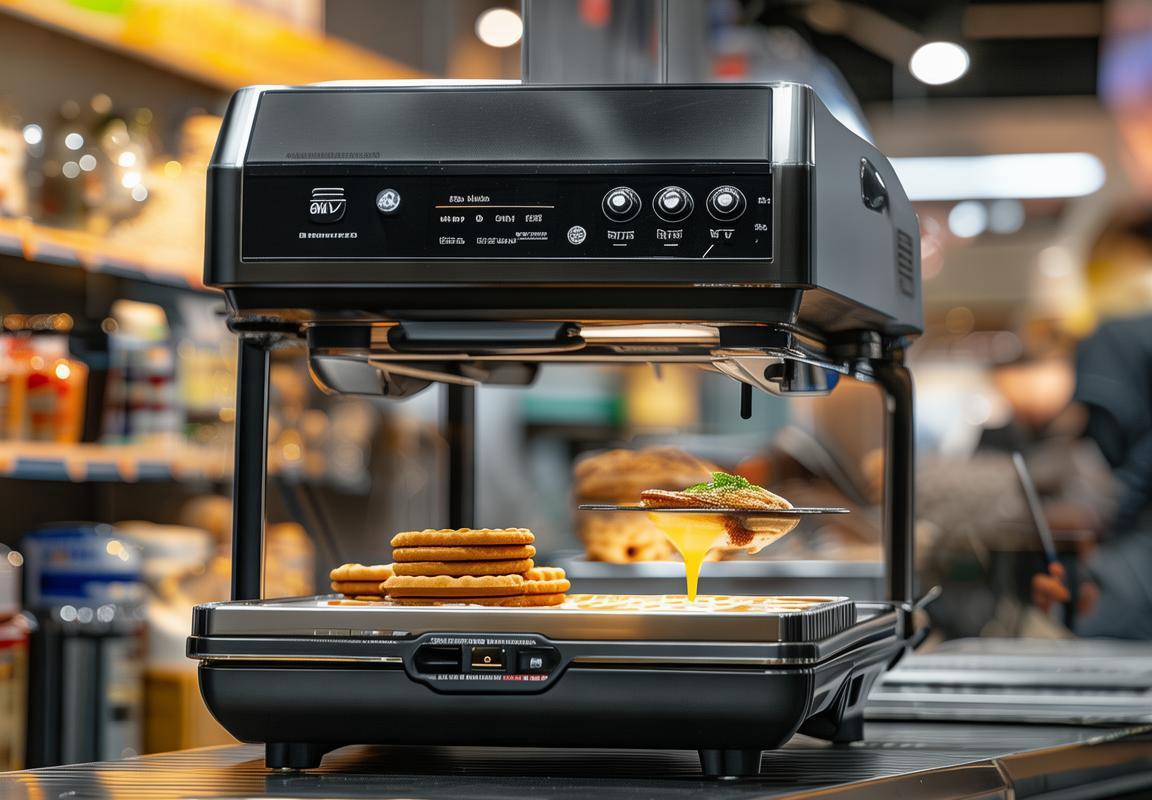
Challenges and Opportunities for Manufacturers
Navigating the competitive landscape of the kitchen appliance industry is no small feat. For manufacturers of industrial waffle makers, the path is riddled with challenges and opportunities that shape the future of their products. Understanding these dynamics is crucial for staying ahead in a market that is constantly evolving.
Manufacturers must grapple with the relentless demand for innovation, which pushes the boundaries of what traditional waffle makers can offer. The rise of health-conscious consumers, for instance, has led to a surge in demand for healthier, low-fat waffle recipes, prompting manufacturers to develop appliances that can produce these new types of waffles. Additionally, the need for convenience has spurred the creation of waffle makers that can quickly and efficiently produce multiple waffles at once, catering to families and those with busy lifestyles.
The market’s global nature also brings about a host of challenges. Manufacturers must navigate varying electrical standards, which can be a significant barrier to entry in certain countries. For instance, the 220V standard is prevalent in Europe and parts of Asia, requiring manufacturers to produce models that are compatible with these voltages. This not only involves redesigning the electrical components but also ensuring that the products meet local safety and regulatory requirements.
On the flip side, the globalization of the market offers a wealth of opportunities. Manufacturers can leverage economies of scale by producing in bulk, which can lead to lower costs and higher profit margins. This also allows them to distribute their products across multiple regions, capitalizing on the growing demand for waffle makers in emerging markets. However, this expansion also means adapting to different cultural preferences and dietary habits, which can be a complex task.
Innovation is not just about technological advancements; it’s also about understanding consumer behavior. Manufacturers must be adept at reading the market’s pulse to anticipate future trends. For example, the increasing popularity of smart home appliances has opened up a new frontier for waffle makers. Integrating smart technology allows these appliances to be controlled remotely, offering users the convenience of a freshly baked waffle at any time.
The rise of eco-friendly products is another opportunity that manufacturers cannot afford to ignore. As consumers become more environmentally conscious, there is a growing preference for appliances that are energy-efficient and made with sustainable materials. This shift not only appeals to the eco-conscious consumer but also helps manufacturers appeal to a broader market segment.
Despite these opportunities, challenges remain. The high cost of research and development can be a barrier, especially for smaller manufacturers. Additionally, the rapid pace of innovation means that products can quickly become outdated. Manufacturers must continuously invest in R&D to keep up with the competition and meet consumer expectations.
The competitive landscape is also fierce, with established brands and new entrants vying for market share. Established players have a strong brand presence and distribution networks, which can be difficult for new manufacturers to overcome. However, this also means that there is room for niche players to carve out a market for themselves by specializing in unique features or target markets.
Regulatory compliance is a significant challenge, with different countries having their own set of rules and standards. Manufacturers must ensure that their products meet these requirements, which can be a complex and costly process. This is particularly challenging for companies that operate in multiple countries or regions.
The quality control process is another critical aspect that manufacturers must manage effectively. Ensuring that each waffle maker that leaves the factory meets the highest quality standards is essential for maintaining the brand’s reputation. This often involves rigorous testing and quality assurance protocols.
In conclusion, while there are numerous opportunities for manufacturers in the industrial waffle maker market, the challenges are substantial. The key to success lies in balancing innovation with cost-effectiveness, maintaining a strong brand, and adapting to the ever-changing demands of the market. By doing so, manufacturers can not only weather the challenges but also capitalize on the many opportunities that lie ahead.
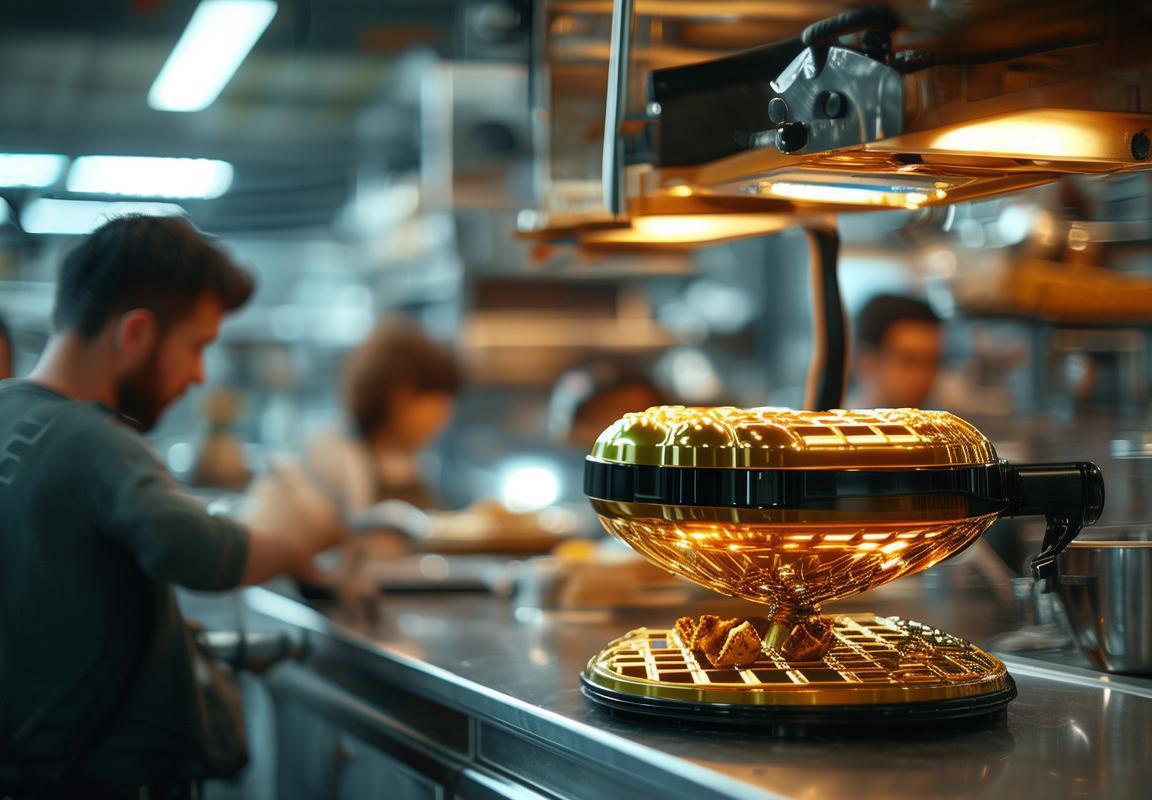
Conclusion: The Future of Industrial Waffle Makers in the Global Landscape
The global landscape of industrial waffle makers is undergoing a transformative phase, influenced by technological advancements, evolving consumer tastes, and market dynamics. As we look ahead, several challenges and opportunities emerge for manufacturers to capitalize on this dynamic industry.
Adapting to Technological ShiftsManufacturers must stay abreast of technological innovations that can enhance the efficiency and appeal of their waffle makers. Smart appliances, for instance, are becoming increasingly popular, offering features like Bluetooth connectivity, remote control, and programmable settings. These advancements not only make the machines more user-friendly but also provide valuable data that can inform product development and marketing strategies.
Sustainability and Eco-Friendly DesignsConsumers are increasingly concerned about the environmental impact of their purchases. Manufacturers that prioritize sustainability and eco-friendly designs will find a niche in the market. This could involve using recycled materials, reducing energy consumption, or creating machines that are easier to recycle at the end of their life cycle.
Diversifying Product LinesTo cater to a wider audience, manufacturers should consider diversifying their product lines. This could mean offering a range of sizes, shapes, and materials for waffle makers. For example, while some consumers might prefer traditional round waffles, others might be interested in square or even heart-shaped waffles. Additionally, exploring different materials like cast iron or non-stick surfaces could attract different segments of the market.
Global Expansion and LocalizationWith the rise of e-commerce, manufacturers have the opportunity to expand their reach globally. However, success in foreign markets often hinges on localization. This means adapting products to meet local regulations, preferences, and even power supply standards. For instance, the 220V standard is crucial for European and American markets, necessitating the development of dual-voltage machines.
Marketing and BrandingEffective marketing and branding are key to standing out in a crowded market. Manufacturers should focus on building strong brand identities that resonate with consumers. This could involve storytelling, showcasing the heritage of waffle making, or highlighting the quality and craftsmanship of their products. Influencer partnerships and social media campaigns can also help create a buzz around new products.
Evolving Customer ServiceCustomer service is no longer just about resolving issues; it’s about providing an overall experience that exceeds expectations. Manufacturers should invest in customer service training, develop comprehensive online support resources, and offer flexible return policies. This approach not only helps in customer retention but also in gathering valuable feedback for product improvements.
Regulatory ComplianceNavigating the complexities of international regulations is a significant challenge. Compliance with safety standards, electrical codes, and import/export requirements can be daunting. However, manufacturers that excel in this area can gain a competitive edge and build trust with customers and distributors alike.
Cost Management and EfficiencyIn a competitive market, managing costs while maintaining quality is crucial. This involves optimizing production processes, sourcing materials efficiently, and adopting lean manufacturing practices. By reducing waste and improving efficiency, manufacturers can offer competitive pricing without compromising on product quality.
Embracing the Digital AgeThe digital age offers numerous opportunities for manufacturers to streamline operations and enhance customer engagement. From online sales platforms to data analytics for inventory management, embracing digital solutions can lead to significant improvements in business performance.
Opportunity in Health and WellnessAs the health and wellness trend continues to grow, there’s an opportunity for manufacturers to develop waffle makers that cater to these preferences. This could include machines that can make healthier versions of traditional waffles, such as those made with whole grains or low-fat ingredients.
The Future of InnovationLooking ahead, the future of industrial waffle makers is likely to be defined by continuous innovation. Manufacturers that invest in research and development will be at the forefront of new technologies, such as integrated smart kitchen systems or even 3D-printed custom waffle makers.
In conclusion, the path forward for manufacturers in the industrial waffle maker industry is filled with challenges, but it is also rich with opportunities. By staying adaptable, innovative, and customer-focused, manufacturers can navigate the global landscape and secure a prosperous future.